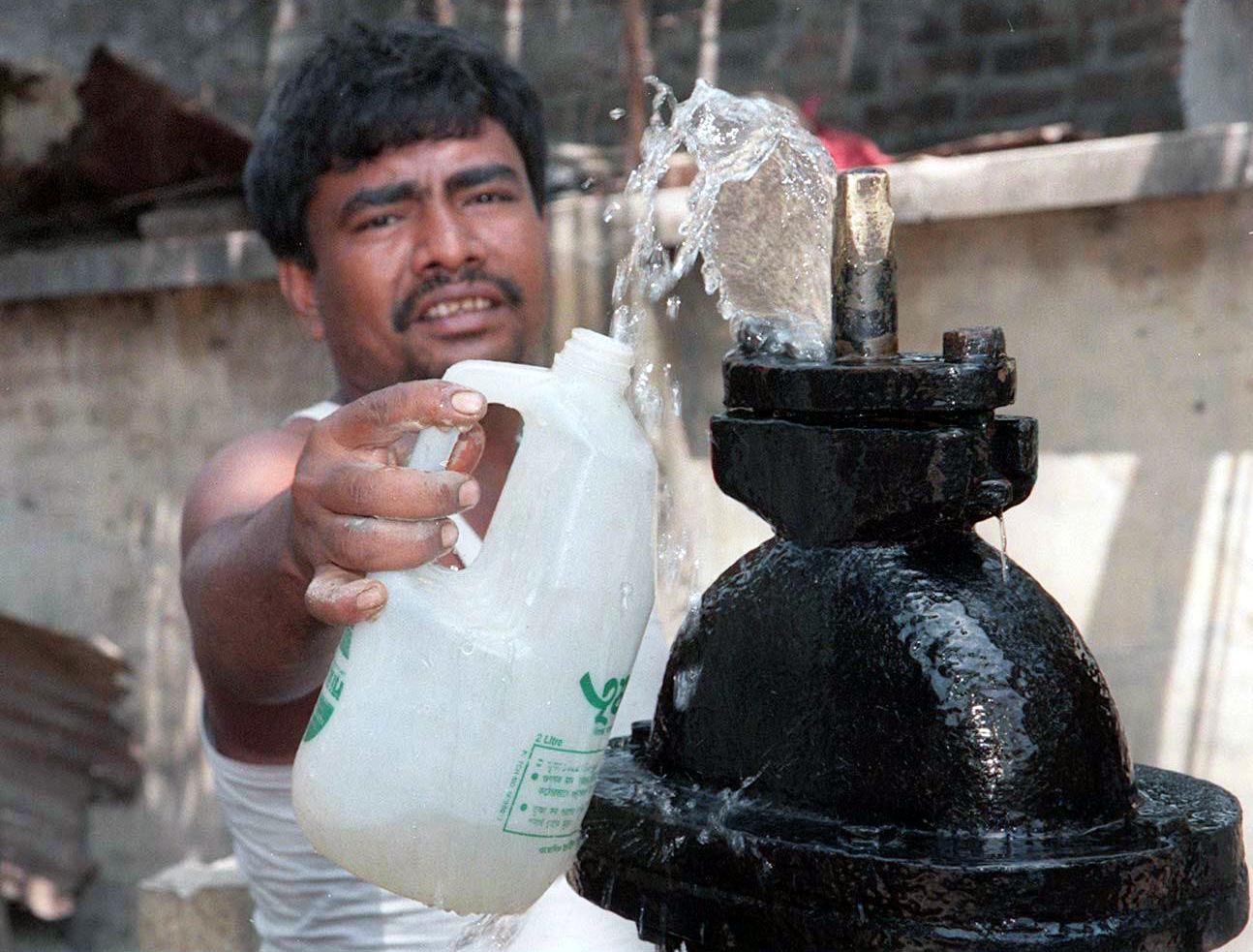20 million people in Bangladesh are drinking water laced with arsenic, Human Rights Watch survey finds
As many as 43,000 Bangladeshis die each year from arsenic-related diseases

Your support helps us to tell the story
From reproductive rights to climate change to Big Tech, The Independent is on the ground when the story is developing. Whether it's investigating the financials of Elon Musk's pro-Trump PAC or producing our latest documentary, 'The A Word', which shines a light on the American women fighting for reproductive rights, we know how important it is to parse out the facts from the messaging.
At such a critical moment in US history, we need reporters on the ground. Your donation allows us to keep sending journalists to speak to both sides of the story.
The Independent is trusted by Americans across the entire political spectrum. And unlike many other quality news outlets, we choose not to lock Americans out of our reporting and analysis with paywalls. We believe quality journalism should be available to everyone, paid for by those who can afford it.
Your support makes all the difference.Each year, 43,000 Bangladeshis die as a result of drinking arsenic-contaminated water, a figure which has not significantly altered since steps were taken to clean up Bangladesh's water supply at the turn of the century.
Corruption and international neglect are to blame for the fact 20 million people in Bangladesh are still drinking water laced with arsenic, more than a decade after the extent of the problem was made clear, according to a new report by Human Rights Watch (HRW).
There is a high level of naturally occuring arsenic in Bangladeshi groundwater, as there is across South Asia. The poison can cause cancers of the skin, liver kidney, bladder and lungs, as well as cardiovascular and lung disease.
This does not normally affect the quality of water in large cities such as the capital, Dhaka, where water is drawn up from untainted aquifers deep in the ground, or purified before distribution.
But in rural areas, around 10 million hand pumps still draw up potentially contanimated groundwater. The Bangladeshi government tends to extrapolate from the number of "clean water" wells available, publishing data suggesting that a large majority of its citizens can access clean water.
However, an independent 2013 survey of water at the point of use also found that 20 million Bangladeshis were still using arsenic-poisoned water.
This was the same as the figure the government published in 2003, following an international outcry about arsenic deaths. At the time, the World Health Organisation called the government's failure to reduce the level of naturally occuring arsenic in its water "the largest mass poisoning of a population in history". The HRW survey said there was "little or no evidence of concerted efforts" to improve the situation for rural villagers.
In its survey of rural areas, HRW found that 60 per cent government water points were broken or restricted from public access. Analysing 85 per cent of the roughly 125,000 water points installed by the government between 2006 and 2012, HRW also found that around five per cent broke the government's own recommended maximum level of arsenic content.
"Politicians undermine the allocation of new government water points by diverting these life-saving public goods to their political supporters and allies," the HRW report claimed. In one recent project, 50 per cent of pumps were allegedly constructed in locations intended to benefit government officials.
The problem is compounded by international indifference and the failure of NGOs to address the issue, according to the report.
They suggest that NGOs such as UNICEF have blindly provided funding to government clean-water initiatives, despite evidence that the government's water testing methods "barely function", and that the government expends "considerable resources in areas where the risk of arsenic contamination is relatively low".
It is estimated that up to 5 million Bangladeshi children born between 2000 and 2030 could die after being exposed to arsenic in their water supply.
Join our commenting forum
Join thought-provoking conversations, follow other Independent readers and see their replies
Comments